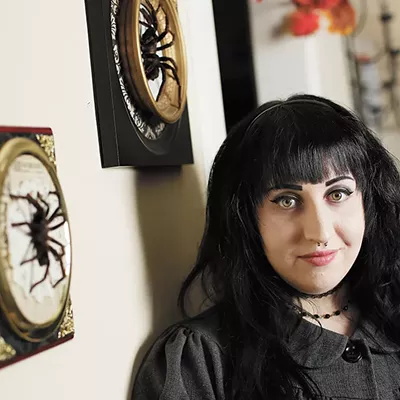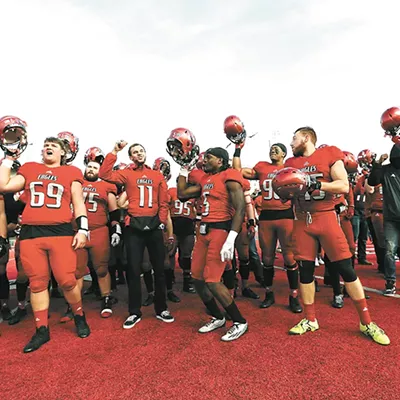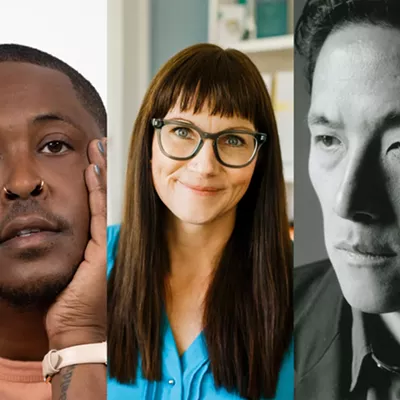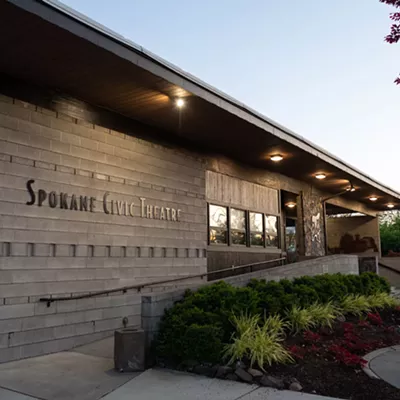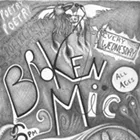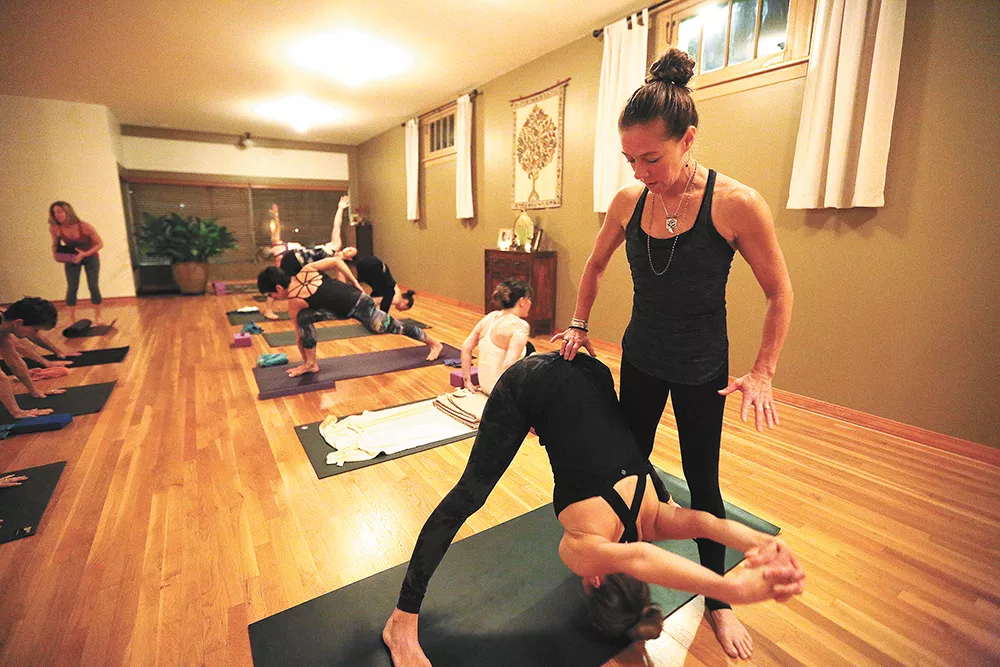
It's 6:30 am at the Ashtanga Yoga School of Spokane, and the members of the early morning yoga crew are quietly, purposefully working on their individual practices under the watchful eye of teacher Shelley Enlow.
Some are more advanced, doing forearm balances that turn into upside-down lotus postures; others are struggling to balance in tree pose.
Sixty-something women and men practice side-by-side with much younger, stronger and more flexible counterparts. Everyone seems to get the same attention and encouragement, regardless of their abilities.
Nancy Enz Lill, a dark-haired, lithe 56-year-old who has practiced with Enlow for five years, is 30 minutes into her practice as she gets ready to do a deep backbend.
She kneels, takes a breath and prepares to arch backward, bringing her head to the floor.
Enlow supports Lill as her head touches down and her hands find her feet. The two begin to breathe together. Lill changes her hand position, and with the top of her head still on the floor, takes another five breaths.
"Yes, Nancy, good job!" Enlow tells her.
In these classes, known as Mysore, or self-practice, Enlow offers the yoga equivalent of personal training. "Yes" is the word she uses most often.
Enlow is tiny — barely 5 feet tall — but, at age 45, is so strong that she can assist men three times her size.
Her own practice is quite advanced — she is a senior apprentice to David Garrigues, one of the few yoga teachers certified to teach the Ashtanga method by its late founder, Sri K. Pattabhi Jois. She recently assisted Garrigues at an advanced Ashtanga workshop in London. In turn, Garrigues has taught several workshops at AYS Spokane, as has another star in the Ashtanga yoga firmament, Tim Miller, both of whom have national and international followers. That was unusual, and a treat for Spokane's yoga community.
As a wife and mother of two, Enlow divides her time between mom duties, managing the studio and teaching the majority of the classes along with her husband, Brett, an emergency room physician. The studio is dedicated solely to the practice of Ashtanga, which is rare in the age of "yoga plus" — yoga and spinning, yoga and Pilates, yoga and weight training, not to mention yoga and pot, beer and chocolate.
"The Ashtanga method is so complete," Enlow says. "Yes, you can get a leaner, stronger and more flexible body by doing Ashtanga, but those are just by-products of the physical practice.
"Ashtanga yoga is an exploration of your entire being — body, mind, spirit. It's a practice of going inward and learning to still the mind (or at least becoming aware of the way you think), so that you can begin to see your own truth, what your life is really about, and how you have a connection to everything and everyone."
The students, whose professional and personal lives are varied enough to include medical doctors, artists, homemakers, professors and college students, come to the practice with a variety of yoga experience.
Bridget Gies, a former U.S. Navy pilot, has been practicing with Enlow for three years. Gies describes Ashtanga as "a demanding physical practice that integrates breath and focus to reduce the mental clutter that often keeps us from being our best selves." It's a skill, she says, that transfers to all aspects of life, "even landing on an aircraft carrier."
Clark Karoses, 42, is a certified nursing assistant at Kootenai Health in Coeur d'Alene. He says Enlow "consistently challenges my limits — in body, mind and spirit — and shows me a path that allows me to transcend them, if my will is steadfast."
For those working with injuries, the practice can be a great teacher. Students learn to be patient and kind to themselves. Longtime student Connie Ramsey has seen her share of physical challenges, including a torn ACL, rotator cuff surgery and back pain. Enlow has helped her not only continue to practice, but to thrive.
"I am a better practitioner — and person — because of Shelley's influence," Ramsey says. "And she has this great laugh!"
Karoses seconds that assessment. "She shows me my heart," he says, "and demands that I use it." ♦
This article first appeared in InHealth magazine.



